Butterfly Gardening & Plants for South Florida
South Florida is a perfect paradise for butterfly gardening, with warm climate and hundreds of butterfly plants - and many butterfly species to enjoy.
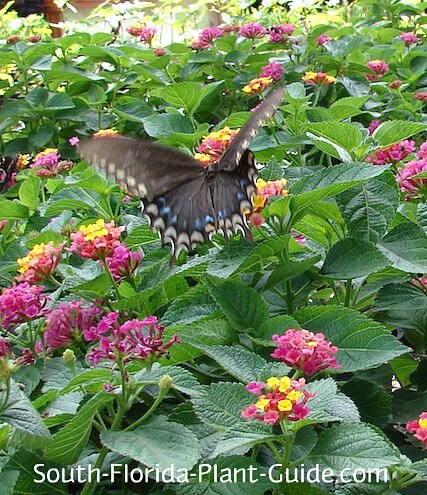
You can create a dedicated butterfly garden or just tuck a few plants that attract butterflies into your landscaping.
A butterfly goes through 4 life stages: egg, caterpillar (larva), pupa (aka chrysalis), and adult.
Adult butterflies live for about 2 weeks. They spend their short lives feeding and reproducing, and both are dependent on butterfly plants.
Butterfly plants fall into two basic groups...host plants and nectar plants.
Host - or larval plants - attract female butterflies who lay their eggs on the plant.
The eggs hatch within a few days and out come tiny caterpillars. These eat the foliage of the host plant, shedding their skin several times as they grow out of it, until the final pupa stage.
Emerging from the pupa - or chrysalis - is the adult butterfly, and the metamorphosis is complete.
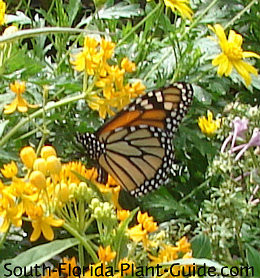
Adult butterflies need nectar plants on which to feed.
They use their proboscis, like a long straw, to drink the nectar from a flower.
Some species have a short proboscis, and usually drink from smaller flowers.
Some with a longer "straw" hover like hummingbirds to drink from tubular flowers. When not in use, the proboscis curls up beneath the butterfly's head.
Which butterfly plants work in your landscape?
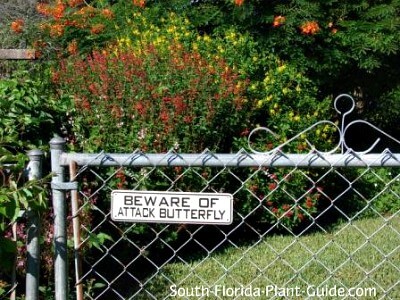
A true butterfly habitat is going to look more wildflower eclectic than tidy landscape design.
Host plants will be eaten.
They usually grow back just fine but it can give your garden a shabby, munched-on appearance at times.
Obviously you can't use any kind of insecticide.
So dealing with problems from other insects may become impossible in order to preserve a safe haven for butterflies.
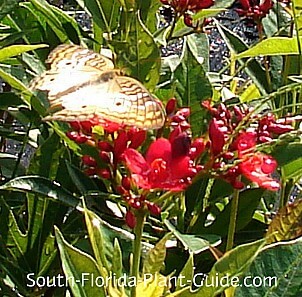
If you'd prefer more control over the look of your landscape plants, use nectar plants.
Most homeowners prefer this method of butterfly gardening...the butterflies flutter and feed, you smile and enjoy, and everybody's happy.
Serious butterfly gardening is both an art and a science
You can create a butterfly habitat complete with resting places to bask in the sun, shelter from winds and from birds, and a water source - as well as host and nectar plants.
Host plants generally attract specific types of butterflies.
Milkweed, one of the most commonly sold butterfly plants, attracts the monarch butterfly.
Gulf fritillary loves passion vine.
Black swallowtails enjoy fennel, parsley and dill.
The cloudless sulfur likes cassia flowers.
Butterflies also help pollinate flowers as they sip nectar.
They're cold-blooded, so they don't produce body heat. As a result they need to bask in the sun to raise their body temperature, giving them the energy they need to move freely. But in our warm climate, basking is usually only briefly necessary.
To provide basking spots, you can simply use flat stones or areas of mulch near the butterfly plants.
Male butterflies will drink from a puddle of water in order to absorb salts that help with fertility.
A shallow water source for butterflies can be created from a low dish of water on the ground filled with some sand and a few small rocks or twigs for the butterflies to land on to drink. Fill the container or dish with water to the same level as the sand.
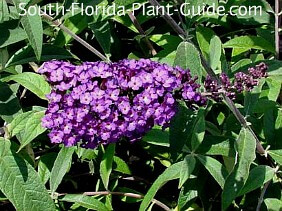
Place nectar plants and host plants in sunny areas protected from winds.

Don't use them by a bird bath or feeder since birds are natural predators.
Host plants get eaten quickly. Milkweed has sparse leaves to begin with, so when it gets eaten, your larval stage butterflies may run out of food.
Be prepared to have more on hand to add to the garden.
Attracting the most butterflies
The best way to enjoy lots of these lovely creatures is to use plants in groups.
Flowering nectar plants grown in drifts or masses are more visible and attract the most types of butterflies like a big Sunday buffet.
A large area covered by a host plant vine like Dutchman's pipe is ideal.
This way the caterpillars won't run out of food, they'll just move on to the next batch of foliage.
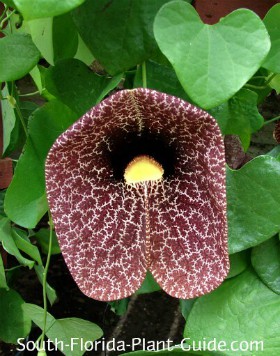
To observe butterflies more closely, place plants in an area near the house - or even in windowboxes and patio containers where you'll have easier visual access than across an expanse of yard.
Butterfly plants on this site include...
TREES
Cassia
Dwarf Poinciana
Golden Dewdrop
Hong Kong Orchid
Jatropha
Powderpuff
Red Cluster Bottlebrush
Weeping Bottlebrush
SHRUBS
Beautyberry
Bottlebrush Bush
Buddleia
Cape Honeysuckle
Dwarf Bottlebrush
Dwarf Firebush
Dwarf Ixora
Dwarf Powderpuff
Firebush
Firecracker
Firespike
Golden Dewdrop
Ixora
Jatropha
Panama Rose
Plumbago
Porterweed
Powderpuff
Ruella
Simpson's Stopper
Wild Coffee
Yellow Elder
Take a break!
The ultimate guide to low-maintenance plants
and landscaping!
An ebook by
Chase Landre
author of
South-Florida-Plant-Guide.com
Learn more!
Get a greener thumb!
Want to learn more about South Florida planting, watering, fertilizing and dealing with weeds and pests?
See our Gardening How-To section for answers!
Get instant curb appeal!
An ebook by
Chase Landre
author of
South-Florida-Plant-Guide.com
Learn how to get instant curb appeal with fast growing plants and landscaping techniques!


